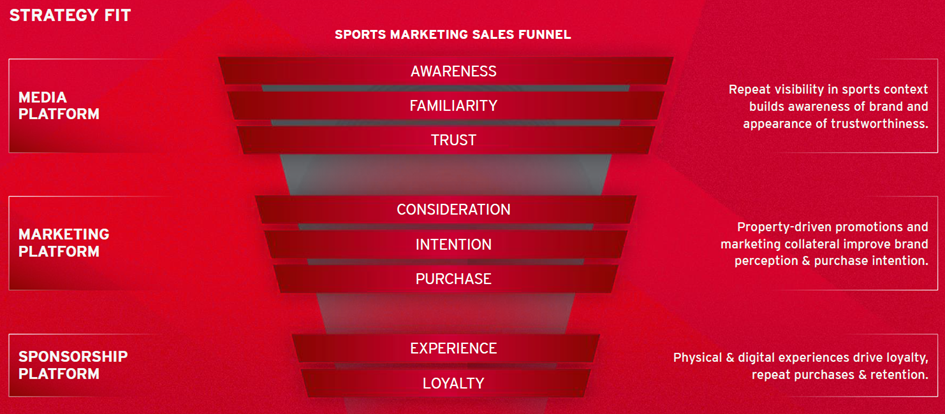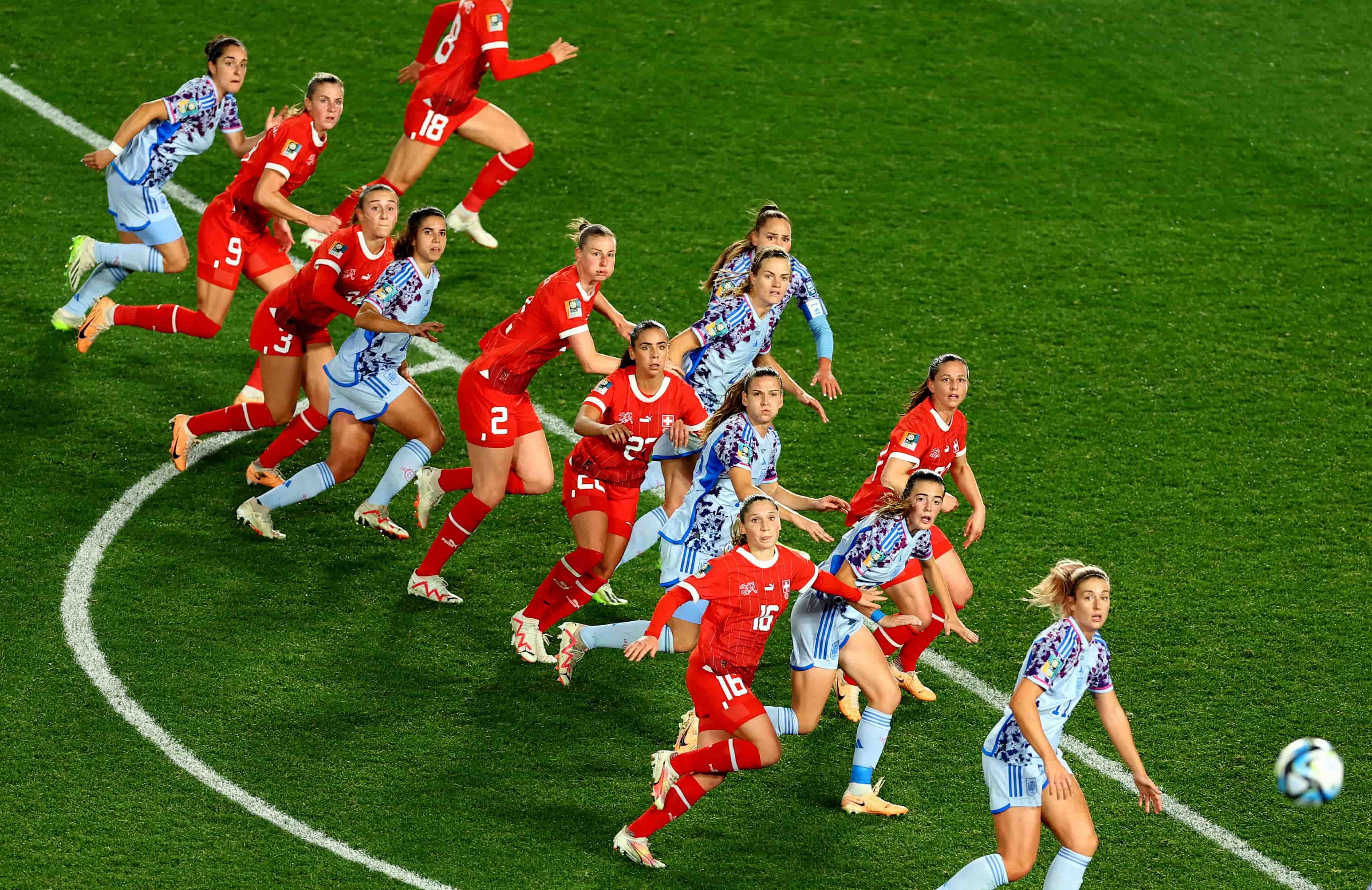Maximising your investment: Measuring the ROI of sports sponsorship

Celebrating the best examples of sports sponsorship with VSA
Sports sponsorship or TV advertising? Why complementing both is the best marketing strategy
The ultimate sports sponsorship guide
The rise of women's sport: An unparalleled sponsorship opportunity
Five ways women’s sports sponsorship can provide ROI for your brand
Sports sponsorship is an effective way for brands to increase awareness and loyalty, enjoying a more targeted approach to audiences compared to traditional advertising. It has long been a powerful tool for brands looking to engage with customers in a meaningful way. Here we'll break down the mystery of ROI and show you how to measure the real impact of sports sponsorship on your bottom line.
TABLE OF CONTENTS
- THE IMPORTANCE OF ROI IN SPORTS SPONSORSHIP
- TYPES OF SPONSORSHIP SUCCESS DATA
- IDENTIFYING THE WINNING SPONSORSHIP OPPORTUNITY
- SEIZING THE POTENTIAL OF DIGITAL ACTIVATION
Like any marketing campaign, diving into sports sponsorship calls for setting SMART goals (specific, measurable, achievable, relevant, and time-bound) that align with where the target audience currently sits in the sales funnel and where a potential sponsorship will cross over with them.

The sports marketing sales funnel begins with a brand’s awareness, familiarity, and trust among the target group. If the sponsor’s objective is to improve on these aspects, sports sponsorship can serve as a media platform that offers visibility in an emotional and usually industry-exclusive environment.
If those top-funnel metrics are already at a high level, a sponsor may want to use sports sponsorship as a marketing platform, e.g., through property-driven promotions and collateral to drive the target group’s consideration, purchase intention and actual purchases of its products or services.
Finally, the bottom-funnel objectives of experience and loyalty can be achieved by creating physical and digital experiences with a sponsorship platform that motivate the audience to make repeat purchases and ensure their retention as a client.
The importance of ROI in sports sponsorship
Gone are the days when sponsorships were signed just for the love of a sport or a club. Now it’s about tangible measures and asking why a company should sponsor sports when it comes to deciding where marketing budget is allocated. Our recent LinkedIn poll confirmed that.
It is crucial to highlight the importance of setting measurable goals and KPIs to determine the success of the sponsorship, as this allows for more accurate measurement of success and offers a truer reflection of its return-on-investment.
By having clear KPIs, brands can better evaluate their sponsorship initiatives and make data-driven decisions to optimise their marketing efforts. Here we'll break down the mystery of ROI and show you how to measure the real impact of sports sponsorship on your bottom line.
Types of sponsorship success data
There are several types of data to lean on when measuring the success of sports sponsorship.
Primary data comes from the target audience through surveys or focus groups. This data can provide insights into the attitudes, behaviours, and perceptions of the audience. Given its direct nature, it is the most trustworthy source of whether sponsorship has been successful.
Secondary data is a lot easier to come by. The metrics have already been collected by other sources, such as media coverage or social media analytics. This type of data can provide information on the reach and impact of the sponsorship.
Examples of primary and secondary research methods include:
Cross-media research
Assessing the weighted media equivalency is a method of quantifying the media exposure generated by sports sponsorships. It involves calculating the monetary value of the media coverage a brand receives from its sponsorship activities, comparing it to the cost of traditional advertising.
By assigning a weighted value to media exposure, brands can better understand the visibility of their sponsorship efforts and how much they would have had to pay for the exposure in classic advertising.
However, this method has its limitations, as it only measures the quantity of exposure and not the audience quality or the sentiment associated with the brand's presence in the media. Despite these shortcomings, weighted media equivalency provides a useful starting point for evaluating the ROI of sports sponsorship.
Social media analytics
Social media analytics provide valuable insights into the performance of sports sponsorships by tracking engagement, reach and sentiment. Brands can monitor the conversation around sponsored events, teams, or athletes, measuring the volume of mentions, shares, likes and comments. This data can reveal trends, influencers and potential areas of opportunity or concern.
Social media analytics also provide a measure of the brand's share of voice compared to competitors within the same sponsorship landscape. By monitoring and analysing social media performance, brands can fine-tune their sponsorship strategies, identify successful tactics, and optimize their approach to maximize ROI from their sports sponsorship efforts.
However, brands face other challenges in measuring ROI from sponsorship, such as the difficulty of quantifying awareness and loyalty, external factors affecting results and interpreting data.
Market research
Market research plays a vital role in measuring the success of sports sponsorship by gathering and analysing information about the target audience, competitors and the overall market landscape. Through market research, brands can identify the effectiveness of their sponsorship strategies in terms of audience reach, brand recognition and preferences among consumers.
Market research methods such as focus groups and interviews enable brands to collect primary data and gain insights into audience opinions and attitudes towards the sponsored events, teams, or athletes. This information helps brands tailor their sponsorship strategies to better align with consumer expectations and maximise ROI.
Also, pre-post surveys can help measure the success of sports sponsorships, allowing brands to gather direct feedback from their target audience. This method allows brands to gauge changes in consumer awareness, perceptions and behaviours that result from their sponsorship efforts.
Identifying the winning sponsorship opportunity
Once a brand knows its sweet spot in the market, it can begin to consider which sponsorship rights would be most effective to reach its goals and where. This falls into three categories: on-site, TV viewers, or digital followers.
If a potential customer lacks awareness of the brand, the focus should be on increasing exposure. Market research and weighted media equivalency can measure this to a certain extent. Research has indicated sport sponsorship averages a 3:1 media value weighting when compared to the same spending on TV advertising.
Whilst that figure can be hotly contested and argued, one fact does remain; the brands that have combined the right sports sponsorship with intelligent spending elsewhere on broadcast advertising see the best results. Whilst one brand in a sector can effectively “own” a sport, a good spread across multiple marketing inventories is more likely to create better ROI in sport.
Seizing the potential of digital activation
Our fast-paced digital world offers brands a fantastic opportunity to boost their sports sponsorship ROI by embracing digital activation strategies. By doing so, they can connect with their audience on a more personal level, creating stronger bonds and squeezing more value from their sponsorship investments. These initiatives can include exclusive content, social media campaigns, influencer partnerships and interactive experiences that help to drive awareness, consideration and loyalty. These pillars are likely to form major parts of how the future of sports sponsorship will look.
To gauge the ROI of digital activation, brands should keep an eye on key metrics such as website traffic, social media engagement, conversion rates, and customer retention figures. These data points will help to put a number on the value of digital activation efforts and provide insights into how effective they are in achieving the desired results. By weaving digital activation into the fabric of their overall sponsorship strategy, brands can maximise their ROI and take a more well-rounded approach to measuring the success of their sports sponsorship initiatives.





